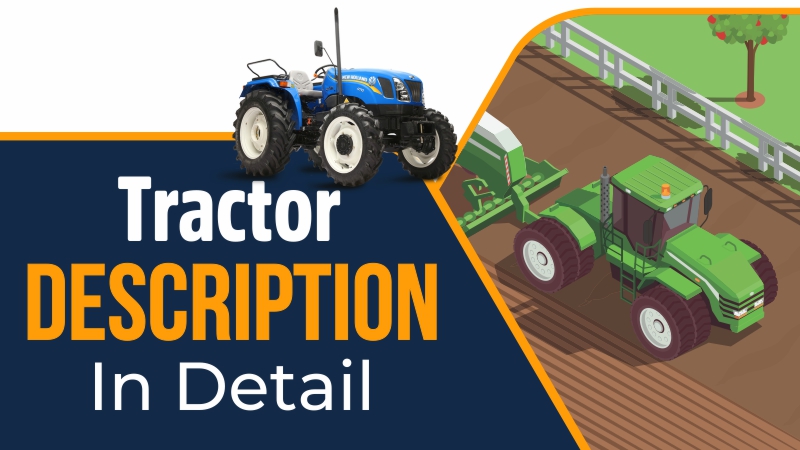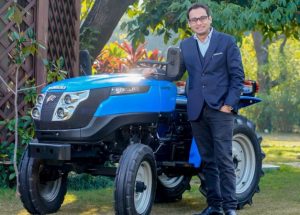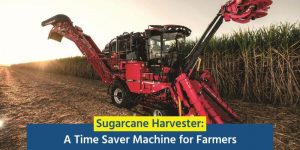What is Tractor?
A tractor is an engineering device created with the intent of carrying a trailer or construction or agricultural equipment at modest speeds while delivering a high tractive effort.
The farm tractor is used for a variety of tasks, including planting, harrowing, tilling, disking, and dragging or pushing agricultural equipment or trailers. The agent noun trahere, which means “to pull,” is where the word tractor originates from Latin. Combining the terms “traction motor” provides an additional definition. The term “traction engine,” which originally meant “an engine or vehicle for pulling wagons or ploughs,” was first used in writing in 1896.
Through a power take-off shaft or belt pulley, the tractor engine serves as the primary mover for both stationary agricultural operations and moving implements.
Tractors can be broadly categorized by the number of axles or wheels, with the two-wheel (single-axle tractors) and four-wheel tractors serving as the main categories (two-axle tractors).
Tractors are categorized according to construction type:
- Riding-type tractors: Riding-type tractors are four-wheeled tractors that allow the driver to sit and operate them.
- Walking-type tractors: Garden tractors and power tillers are examples of walking-type tractors, as are other types of tractors.
Tractors categorized by drive type:
Tractors with tracks Instead of wheels, one track is installed on each side of these tractors. The sprocket is driven by the rear axle shaft that powers this track. The tractor does not have steering gear installed. By applying brakes on one side of the track while the other is going, the tractor is guided. These are employed in land clearing or bulldozing operations.
Tractors with wheels are the most typical agricultural tractors. They can move quickly, and the wheel tyres also help to some extent to dampen field shocks.
Tractors based on the power of tractors
- Small tractors – 15 to 25 hp.
- Medium tractors – 25 to 45 hp.
- Large tractors – more than 45 hp.
Tractors based on a particular use:
- Utility tractors: Utility tractors are vehicles designed for single use.
- All-purpose tractor: Designed to perform nearly all agricultural tasks, including ploughing, harrowing, leveling, pulling, drilling seeds, and running threshers and pumps through its P.T.O.
- Orchard-type tractors: Tractors made specifically for orchard use are known as orchard-type tractors. are significantly taller so that procedures on the trees may be carried out. No portion of the tractor sticks out, making it safe to maneuver it between trees.
- Garden tractors: Garden tractors are constructed smaller than usual for use in vegetable or kitchen gardens.
- Rotary Tillers: Rotary tillers are designed for very tiny holdings or for hills where regular tractors cannot operate well since the fields are relatively small and at different levels. The tillers are equipped with blades that have been tinned, which efficiently pulverizes the dirt to prepare the seedbeds. These are also employed in rice fields for various tasks, such as sloshing.
- Earth Moving tractors: Tractors for moving earth are Built to be sturdy and hefty, both in terms of tract and tyre type. These are employed in the shifting of earth for the construction of dams, quarries, and other projects.
How to Choose a Tractor?
Let’s discuss how a farmer should choose a tractor and what factors are crucial to take into account. The following criteria should be used to choose the tractor:
Utility:
- Landholding: It is typically advised to take into account 1 hp for every 2 hectares of land when using a single cropping scheme. In other words, a 40-hectare farm can manage with a 20 to 25-horsepower tractor.
- Cropping pattern: Where suitable irrigation facilities are present and more than one crop is grown, 1.5 hectare/hp is typically advised. So a 30-35 hp tractor is appropriate for a farm with 40 hectares.
- Conditions of the soil: While a tractor with a shorter wheelbase, higher ground clearance, and a lighter total weight may operate well in lighter soil, it will not be able to provide enough depth in black cotton soil.
- Climate: Air-cooled engines are preferable over water-cooled engines in very hot zones and desert regions. Similarly, air-cooled engines are favored for higher altitudes since water is more likely to freeze there.
- Weight of tractor: Depending on its principal purpose, the tractor’s weight is taken into consideration. Keep in mind that greater weight is advantageous for front-end loading but detrimental for field operations.
Hydraulics
A tractor’s job requires a lot of turning and lifting. This is accomplished using the hydraulic system. A tractor can move and operate because hydraulic fluid delivers energy through the hydraulic system. The same fluid also controls heat transfer and serves as a lubricant. Therefore, check that the hydraulic system is operating at its best before bringing a tractor home.
Safety and Comfort
While purchasing, pay attention to the tractor’s safety and comfort. You can concentrate on a few typical issues, such as:
- Adequate distance between the pedals and the fenders
- Proper platform design for the operator
- Adjustable seats and a steering wheel
- Controls are reachable from a standard range of motion
- Good handhold condition
- Panel lights’ visibility
Transmission
- Hydrostatic transmission
- Mechanical transmission
A mechanical transmission uses less energy than a hydrostatic one. However, the hydrostatic transmission offers the flexibility to choose any engine (or ground) speed between zero and the maximum, making it more operationally efficient.
Repairing facilities
Check to make sure a nearby dealer for the tractor you want to buy has the technical know-how to maintain and repair it.
- Running expense
In order to reduce operating costs, tractors with lower particular fuel consumption should be chosen above others.
- Price Paid Up Front and Resale Value
A farmer might not plan on a tractor getting additional features down the road. It is simple to switch out an old tractor for a new one as farmers’ needs grow. Additionally, one might own multiple tractors for a variety of purposes.
To get the latest updates on the tractor, tractor price, and tractor news install the KhetiGaadi application.




